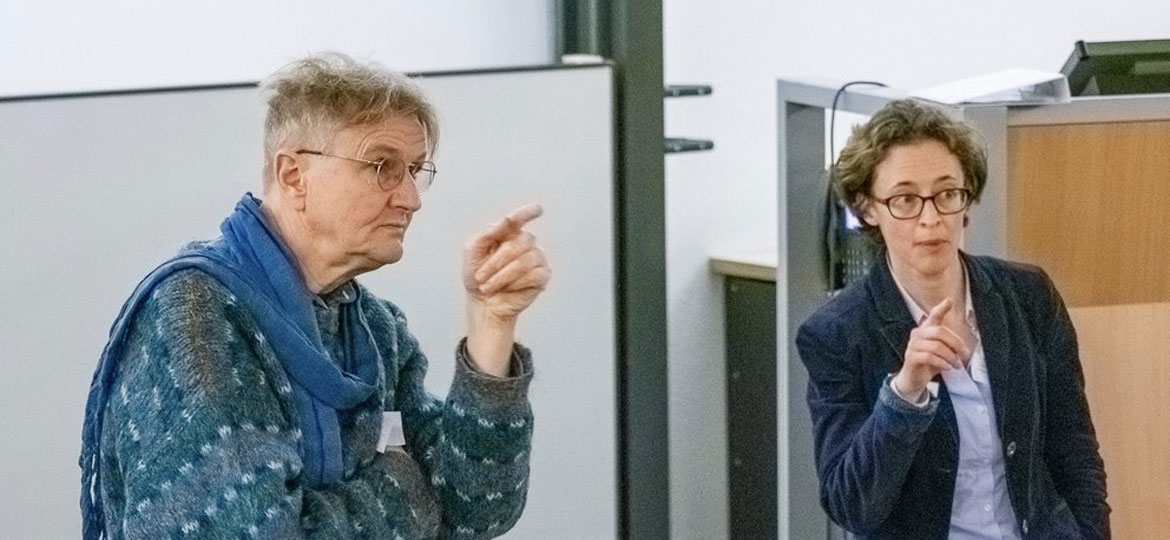University Colleges (UCs) are the main educational institutions providing Liberal Arts & Sciences (LAS) education in the Netherlands. To facilitate both broad and in-depth learning, UCs aim to create an environment where students are challenged in their critical thinking, participate in interdisciplinary engagement, and reflect on their social and personal values. This happens both in class engagement with academic knowledge, but as much in the university setting as a whole, which is why UCs have always encouraged the physical presence of students and staff to establish a campus community.
However, in the past academic year COVID-19 forced all UCs to move to online education. After four months of remote emergency teaching, it is time to look back and reflect. What are the first lessons learned of teaching LAS online and how can we use these insights in case of a future lockdown? In this blog, I share some lessons learned at UC Fryslân and would like to invite colleagues from other UCs to share your experience and suggestions on how to teach online and still maintain the LAS values.
What students appreciate
In the midst of the lockdown, lecturers voiced concerns about the difficulties in moving their classes to an online environment and its effect on their teaching. However, both formal (course evaluations, programme committee reports) and informal (debriefs with students and lecturers) feedback seems to indicate that there is no difference in how content is perceived by students. In fact, when specifically asked about the effects of online learning on knowledge compared to in person classes, students overwhelmingly indicated that the transition was “smooth”, “great” and “worked surprisingly well”. In addition, in some cases they stated that the content online was “better in terms of in-depth analysis” and, asked about the adaptation to the online environment in formal evaluations, the majority of students agreed that it was appropriate to meet the learning outcomes of the courses.
As a matter of fact, a number of components that were developed for the online learning environment can be maintained when we move to a new hybrid situation. This works in particular when teaching activities concern the cognitive dimension of learning (knowledge transfer from teacher to student or student to student), which also allows for asynchronous teaching where students can prepare in their own time(zone).
Lessons that will benefit your teaching:
– Go back to the basics of course design and think about constructive alignment in a hybrid/online environment to develop appropriate course material
– Record content beforehand and use the classroom mostly for discussion rather than lecturing (the traditional flipped classroom idea)
– Re-use and share material and resources where applicable
– Make use of an online platform that allows for break-out groups
– Ask for input through a (structured) discussion board which for example benefits more introverted students
– Make regular use of polls and check-in questions to keep students engaged
– Look for additional support such as teaching assistants
– Form groups with front-runners and colleagues who are struggling and help each other out because, as it turns out, there is usually someone around who already has the experience to help you with your innovative idea!
Community is key
Whereas pure knowledge transfer went unexpectedly well during the lockdown, the effect of online education on the social and academic community was less favourable. The on-campus LAS setting specifically focuses on small-scale and personalised learning where lecturers act as co-creators rather than sages imparting knowledge. The online environment changed this set-up. Students were scattered around the world and had difficulties in motivating themselves and each other to participate in classes and group work. We also noted higher levels of stress and anxiety, among both students and staff. To illustrate, lecturers struggled with a lack of immediate verbal and non-verbal feedback and it took much more energy to keep classes interactive when students were not visible or responding. This was further amplified by technical issues that continuously disrupted the communication. Moreover, study advisors reported difficulties checking in on students without seeing them walking around the campus.
How to keep up the community spirit:
– Think about the community aspect when redesigning your courses and not only about the content, e.g. in terms of group work and collaboration
– Make time to check in with students at the start and the end of the class and add regular Q&As and feedback moments
– Set-up a student (and potentially staff) buddy-system for studying and keeping track of each other
– Try to incorporate teaching elements that you enjoy in your online classes to make sure teaching continues to give you energy!
Reflecting on the last four months, it becomes clear that the lockdown stimulated innovative ideas and that students appreciated the efforts put into content transfer. At the same time, the development of crucial LAS competencies beyond the cognitive ones, such as co-learning, social responsibility and interdisciplinary engagement, are much harder to facilitate in an online setting. The physical academic community with its vibrant campus and personalised learning is much more apt to facilitate the holistic development of a student.
Nevertheless, we cannot predict what the next academic year will look like and whether we will once again be confronted with a lockdown. Hopefully, these first lessons learned can then be a way to start a conversation, share more tips and tricks and overall further the discussion on online learning in an LAS environment.




